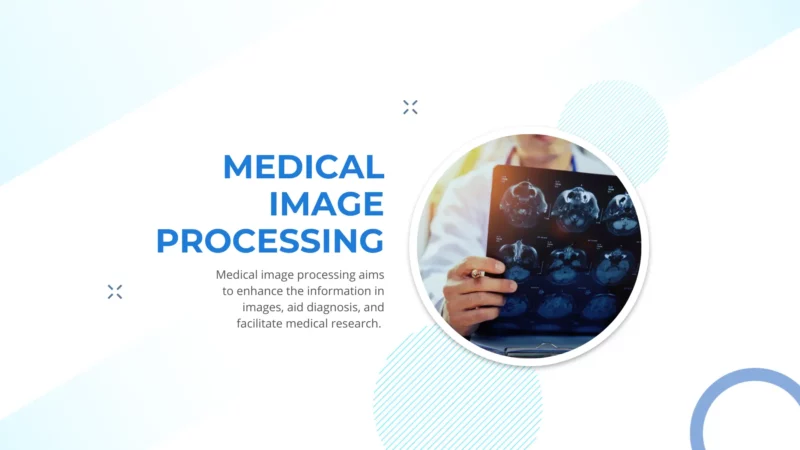Greetings, fellow Newsletters! May you always be in good health.
This is the IAES Newsletter of the Institute of Advanced Engineering and Science. Today we will share news about medical image processing. Medical image processing is the study of using various techniques and algorithms to analyze and interpret medical images generated from imaging modalities such as X-rays, CT scans, MRI, ultrasound, and others. Medical image processing aims to enhance the information in images, aid diagnosis, and facilitate medical research. Some important aspects of medical image processing include image acquisition, image preprocessing, image segmentation, feature extraction, image registration, image fusion, disease detection and diagnosis, computer-aided diagnosis (CAD), 3D visualization, and machine learning and deep learning.
Alqaisi and George (2022) discussed early detection and classification of melanoma using artificial neural networks (JST) and the ISIC 2018 dataset. The importance of skin cancer detection was emphasized in an effort to prevent progression and potentially fatal outcomes. The ISIC 2018 dataset was used as it contains diverse dermoscopy images, specifically for four types of melanomas. The pre-processing stage involves four important steps, such as hair particle removal, cropping, thinning and normalization, to isolate cancerous areas in skin images. Frequency domain transformations, such as DCT, DWT, and gradient transform, are applied to convert the images into frequency domain coefficients. Statistical feature extraction methods are used to compress the data size for more efficient JST training and capture important features of the transformed images. Finally, using JST for melanoma classification.
Asmaa Abdulrazaq Alqaisi, Loay Edwar George
Skin cancer is one of the most dangerous types of cancer. Some types of this cancer lead to death, so cancer must be discovered and indexed to avoid its spread through initial detection in the impulsive stage. This paper deals with the detection and indexing of different types of melanomas using an artificial neural network (ANN) depending on the international skin imaging collaboration (ISIC) 2018 dataset that was used. The pre-processing is the most important part because it formulates an image by insolated the cancer part from the skin image. It consists of four stages, removable, cropping, thinning, and normalization. This phase has been used to eliminate all the undesirable hair particles on the image lesion. The cropped image transforms into frequency domain coefficients using discrete cosine transform (DCT), discrete wavelet transform (DWT), and gradient transform for sub-band images to extract its feature. The statistical feature extraction is implemented to minimize the size of data for ANN training. The experimental analysis used dataset ISIC 2018 consisting of seven different types of dermoscopic images (this paper deals with four types only). For classification purposes, ANN was implemented and the accuracy obtained is about 88.98% for DWT, 85.44% for sub-band DCT, and 76.07% for sub-band gradient transform.
On the other hand, Amusa et al. (2022) discussed the need for an efficient and versatile medical image enhancement method. The proposed solution is a tri-modal technique that combines unsharp masking, logarithmic transformation, and histogram equalization approaches. The evaluation is performed using three types of medical images and specific performance metrics.
Tri-modal technique for medical images enhancement
Kamoli Akinwale Amusa, Olumayowa Ayodeji Idowu, Isaiah Adediji Adejumobi, Gboyega Augustine Adebayo
Owing to methods of acquisition, medical images often require enhancement for them to serve the intended purpose of computer-aided diagnosis. Most medical image enhancement techniques are application specific, leading to the introduction of different enhancement methods for different medical images. In addition, the execution time of most of the previous enhancement methods is longer than necessary. Hence, there is a need for a method that produces fast and satisfactory results when deployed for the enhancement of several medical images. This paper proposes a tri-modal technique, involving a hybrid combination of unsharp masking, logarithmic transformation, and histogram equalization approaches, for medical image enhancement. Three classes of medical images: X-ray, magnetic resonance, and computer tomographic images are used for the evaluations of the proposed tri-modal method, where absolute mean brightness error, peak signal-to-noise ratio, and entropy are utilized as performance metrics. Both qualitative and quantitative evaluations reveal that the proposed tri-modal method performed better than the four previous methods in the literature for the three classes of medical images used in the evaluation. Also, the execution time of the tri-modal technique compares well with those of mono-mode methods. Thus, the tri-modal technique produces better enhanced medical images from different medical image inputs.
Some of the articles above are a small part of the research on medical image processing. To get more information, readers can visit the International Journal of Advances in Applied Sciences (IJAAS) page and read articles for FREE via the following link: https://ijaas.iaescore.com/.
By: I. Busthomi

